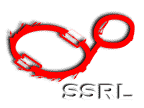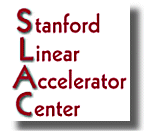| Recent
Advances in Medical Applications of Synchrotron Radiation Stanford Synchrotron Radiation Laboratory March 4-5, 2002 Program Director: Edward Rubenstein |
|
Single
Molecule Imaging
Keith Hodgson Stanford Synchrotron Radiation Laborat ory/SLAC, 2575 Sand Hill Road, MS 69, Menlo Park, CA 94025 |
| X-ray based methods are one of the premier tools for determining structure of a broad range of materials at the atomic level. Such information, including that on biological materials, has driven discovery and advances in many ways that range from gaining fundamental insights into structure-function relations to guiding the development of new materials based upon knowledge of structure. Diffraction of x-rays from single crystals of macromolecules has provided the vast majority of such information currently available today for biological systems. Other techniques like NMR and electron microscopy provide complementary information. One of the "limitatio ns" of x-ray diffraction is the requirement for single crystals. While EM does not have this requirement, in practice cryo-EM approaches have not been able to achieve atomic resolution. The ability to "image" biomolecules at high resolution would be a significant advance. This brief talk will describe a new approach to that goal based upon the use of ultra bright x-rays that would become available from an X-ray free electron laser such as the proposed LCLS at Stanford. Simulations indicate that such a source could be used to obtain atomic or near-atomic resolution structures from non- periodic samples, including single biomolecules. The nature of the experiment is such that there is also a more direct way of obtaining phase information that is necessary to recover the real space image from the intensity information that is recorde d in diffraction space. This talk will briefly describe this new approach. |



